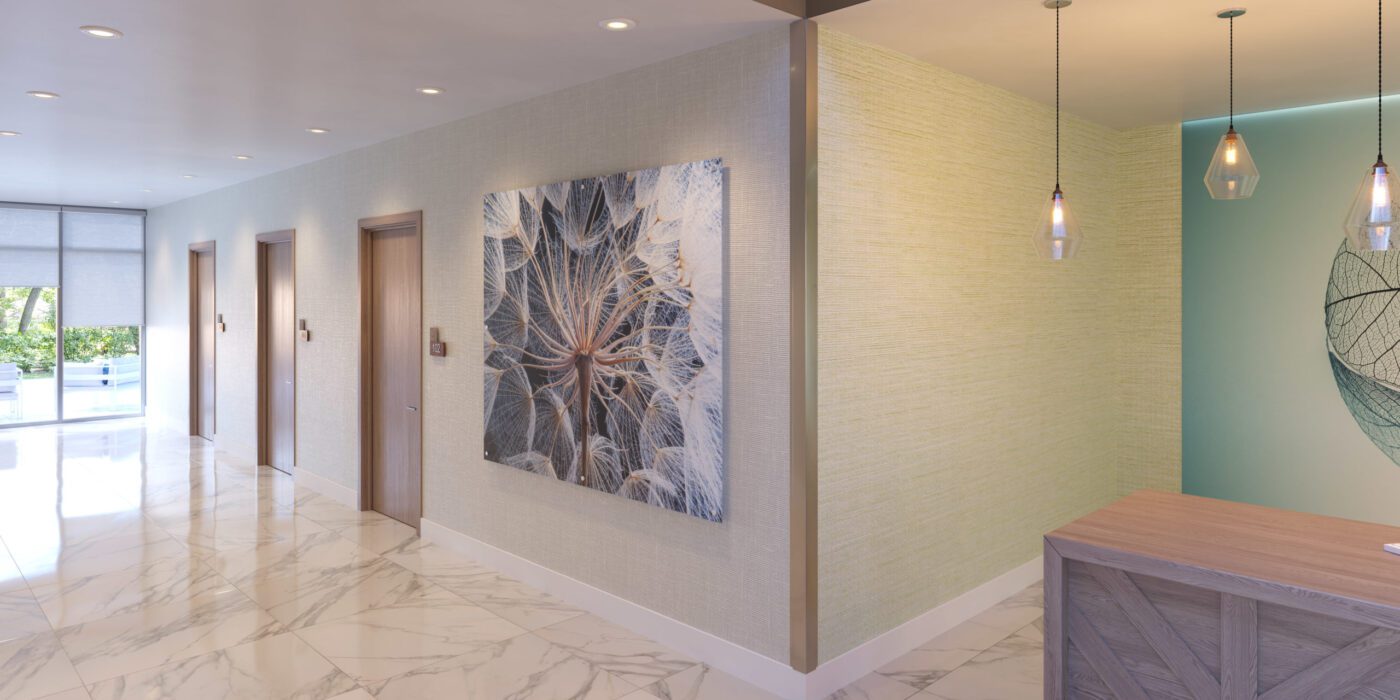Modernism was all about clean lines, raw surfaces, and celebrating the uncompromising rationality of the machine. The vision of LeCorbusier was revolutionary in its time, and caught on in ways he would likely not have expected. Today, most of the public spaces we move through, from offices and schools to hospitals and transport hubs, owe something to the modern movement and its penchant for no-frills design.
Not everyone is happy with this state of affairs. Today, there is a renewed interest in the textures, patterns, and curves, the very features of classical architecture that modernists once avoided. Design-thinkers have learned that natural forms, from the vein patterns in leaves to the curves of the human body, are based on fractals rather than grids. As human beings, we find fractals pleasing to the eye and emotionally restorative. Right angles, in contrast, are harsh and even exhausting. This is why so many people describe modern spaces as feeling grim, sterile, or anxiety provoking.
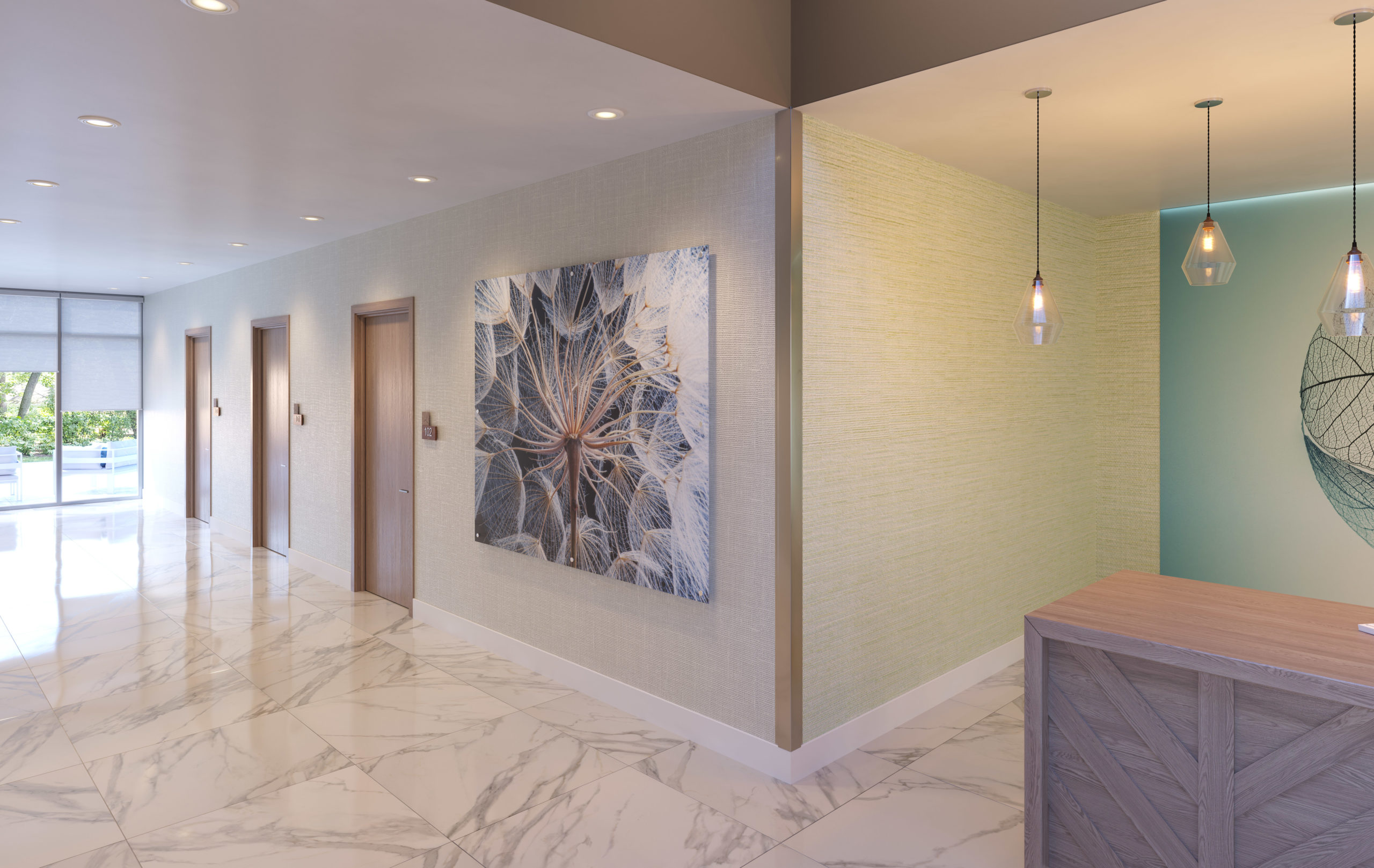
Wall art by Inpro
For architects that are looking to warm a space with natural forms, bringing in some of that fractal energy people literally crave, the experts at Inpro are providing new, high-tech solutions. They create high-end, digital artwork optimized for spaces such as offices, schools, hospitals and more, bringing vitality to spaces that would otherwise be merely functional
Through their critical design research into art and biophilia, and from the inspiration that guides it, Inpro is looking to make art “work” for the occupants in any commercial building. How art, working through digital imagery or printed on an architectural product, can bring a brand, an idea or even a feeling to life.
Nick Cotter, Creative Director at Inpro, says: “The right image can have a calming effect, especially in healthcare environments where patients might be experiencing anxiety, fear or pain. Images of nature offer serenity in an otherwise sterile space, while bright and colorful artwork can stimulate interest and put smiles on faces.” Studies have shown that looking at images of nature is healing, much like spending time in nature. Art, then, is a crucial component of any healthcare space.
As the company explains in their Imaging Products brochure, “North Americans spend nearly 90% of their time indoors. . . Whether it be promoting healing in healthcare, productivity in office environments, stimulating creativity in education, triggering brand recognition in hospitality or reinforcing positive transactions in retail and restaurant, the use of imagery, pattern and color can have an influence. . . these influences are seen even in our sleep, diet and mood.”
Inpro offers six product types for people looking to bring art and photo prints into their office, including Aspex® Printed Wall Protection, a printed, protective wallcovering that can be applied directly to the wall at virtually any size, and printed wall art, which hangs on the wall just like a painting. The brand also produces printed signage, which allows art to be integrated in creative ways throughout the space, durable wall panels that can be used in high traffic spaces like elevator interiors, and printed window shades, which can turn any office into a room with a view. Made from fiberglass, polyester, vinyl, and acrylic, these high-tech Solar Shades help to block glare and unwanted heat while still allowing a degree of natural light.
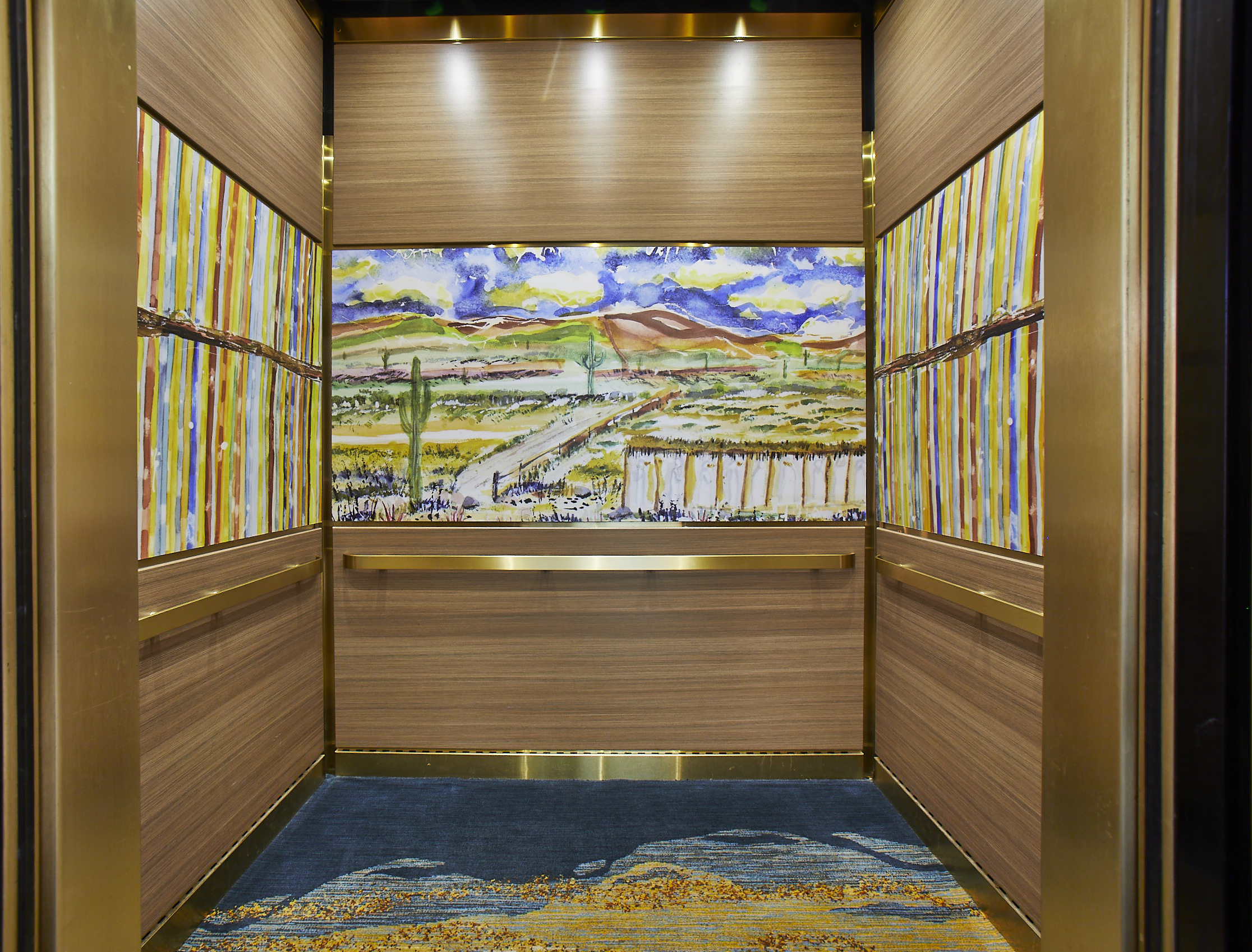
Elevator interior with prestige gold trim and Aspex panels showcasing local artwork.
Each of these products is durable and super high resolution. Furthermore, they are fully customizable. Inpro works with clients to select imagery suited to their brand. If no stock images fit the bill, the brand can help facilitate collaborations between clients and local artists to curate unique artwork for their space. In 2023, Inpro is also launching curated art galleries that can be printed on products based on moods, including categories like “comfort”, “focus”, “restore”, “inspire” and “energize”.
The key is to think about your design needs, choose a theme, and stick to it. Like a real natural landscape, the whole is greater than the sum of its parts, and artworks function better when they are placed in harmonious relation to one another. Through the careful selection of Inpro products, shades can be integrated with wall coverings, art, and signage, creating a fully integrated space.
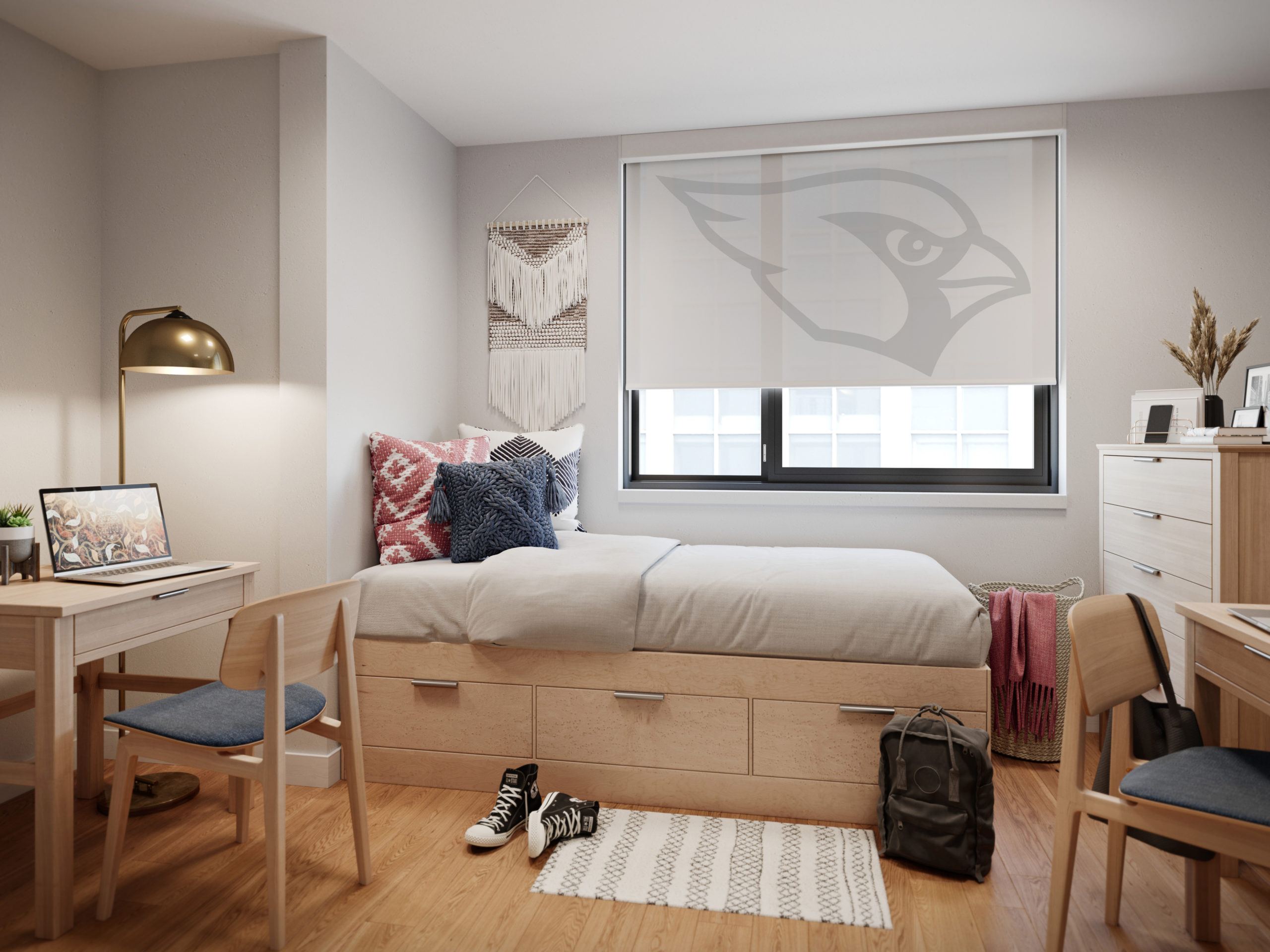
Personalized dorm room window shades by Inpro
“Adding imagery throughout your spaces brings continuity throughout your building and how people experience it,” Dan Roller, Product Manager at Inpro, explains. “For example, use an overall nature theme and create variations on each floor to help people remember different locations and change up the scenery.” This type of cohesiveness will strengthen your brand, whatever industry you are in, and elevate the experience of clients or other visitors to your professional space.
If biophilia isn’t your thing, Inpro can also create graphics that have a more streamlined, minimalist look. The key thing to remember is that with new digital imaging and printing techniques, the possibilities are endless when it comes to wall coverings. One is not limited to solid colors or patterned wallpaper. Any image you can think of can find a place on your walls, your signs or your window treatments.
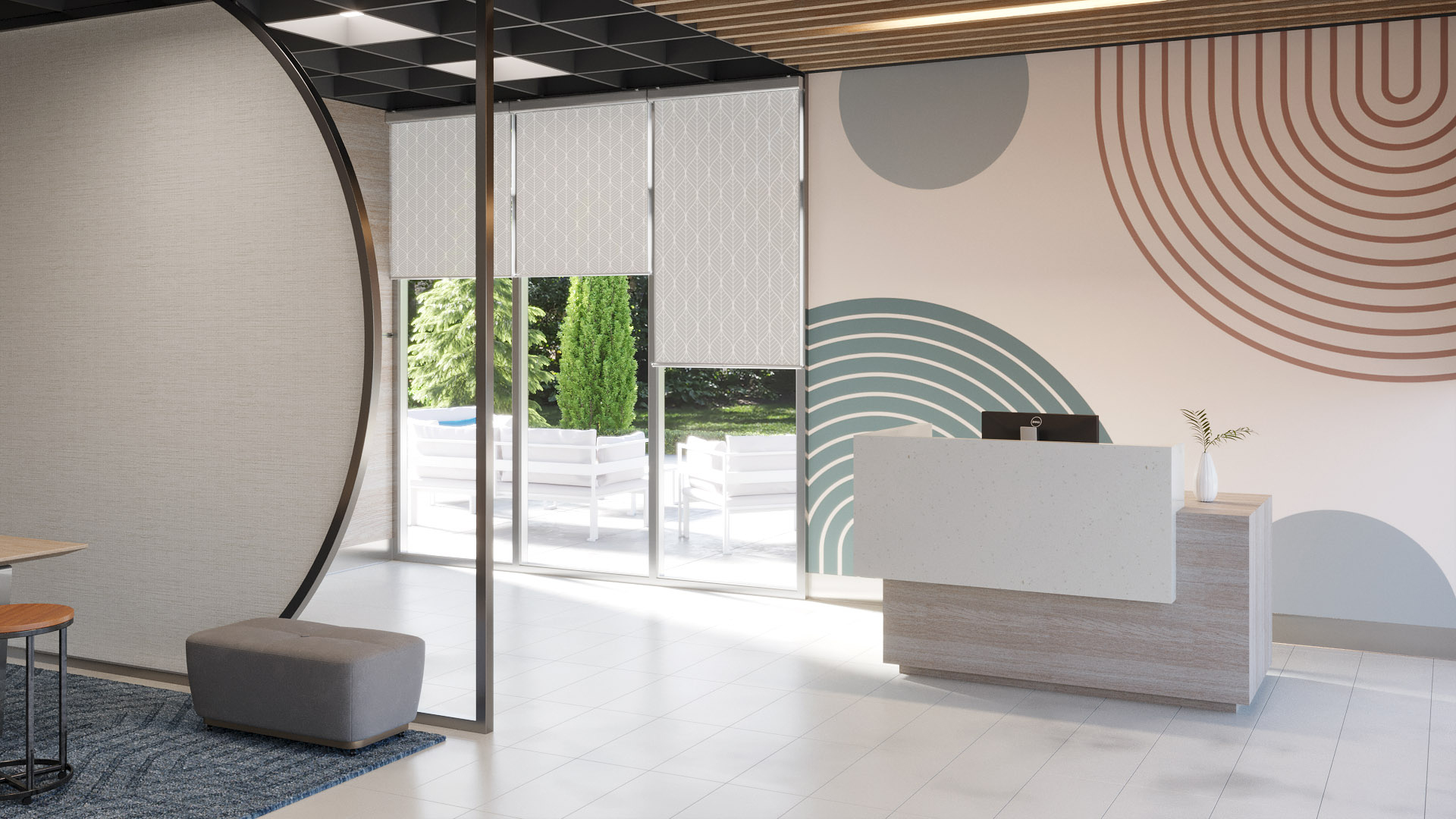
Coordinated window shades and wall art by Inpro
Art is no longer something that hangs on the wall – an ornament for spectators to gaze at – but something that is ultimately functional, helping spaces work better for everyone. This sounds like something even LeCorbusier would approve of.
To learn more about Inpro’s extensive range of architectural products, check out their website and their brand profile on Architizer, or download their visual inspiration guide here.

